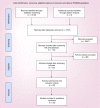Emerging immune targets for the treatment of multiple myeloma
- PMID: 29421983
- PMCID: PMC5810847
- DOI: 10.2217/imt-2017-0136
Emerging immune targets for the treatment of multiple myeloma
Abstract
We reviewed emerging immune strategies for multiple myeloma (MM) therapy excluding US FDA approved drugs. In relapsed refractory MM, isatuximab (anti-CD38) monotherapy achieved overall response (OR) of 24%. Other monoclonal antibodies that have shown efficacy in combination therapy include siltuximab (OR: 66%), indatuximab (OR: 78%), isatuximab (OR: 64.5%), pembrolizumab (OR: 60%), bevacizumab (OR: 70%), dacetuzumab (OR: 39%) and lorvotuzumab (OR: 56.4%). No OR was observed with monotherapy using BI-505, siltuximab, bevacizumab, AVE-1642, figitumumab, atacicept, milatuzumab, dacetuzumab, lucatumumab, IPH2101, lorvotuzumab, BT062 and nivolumab. We included seven clinical trials on chimeric antigen receptor (CAR) T cells. CAR T-cell targets include BCMA, CD19, KLC and CD138. A recent experience of CAR T-cell (B-cell maturation antigen) therapy in advanced MM has shown global response of 100%. The future of monoclonal antibodies and adoptive T cells for MM treatment seems promising.
Keywords: adoptive cell therapy; antibodies; antibody therapeutics; chimeric antigen T cells; immunotherapy; multiple myeloma.
Conflict of interest statement
This work supported in part by grant P30 CA023074 from the National Cancer Institute, National Institutes of Health, Bethesda, MD, USA. The authors have no relevant affiliations or financial involvement with any organization or entity with a financial interest in or financial conflict with the subject matter or materials discussed in the manuscript. This includes employment, consultancies, honoraria, stock ownership or options, expert testimony, grants or patents received or pending, or royalties. No writing assistance was utilized in the production of this manuscript.
Figures
References
-
- NIH NCI. Cancer stat facts: myeloma. https://seer.cancer.gov/statfacts/html/mulmy.html
-
- Society AC. Survival rates by stage for multiple myeloma. 2016. www.cancer.org/cancer/multiple-myeloma/detection-diagnosis-staging/survi...
-
- Hideshima T, Mitsiades C, Tonon G, Richardson PG, Anderson KC. Understanding multiple myeloma pathogenesis in the bone marrow to identify new therapeutic targets. Nat. Rev. Cancer. 2007;7(8):585–598. - PubMed
-
- Magarotto V, Salvini M, Bonello F, Bringhen S, Palumbo A. Strategy for the treatment of multiple myeloma utilizing monoclonal antibodies: a new era begins. Leuk. Lymphoma. 2016;57(3):537–556. - PubMed
-
•• Elaborates role of elotuzumab and daratumumab and other antibodies, which are in preclinical or early clinical phases of evaluation for treatment of multiple myeloma (MM).
Publication types
MeSH terms
Grants and funding
LinkOut - more resources
Full Text Sources
Other Literature Sources
Medical
Research Materials

